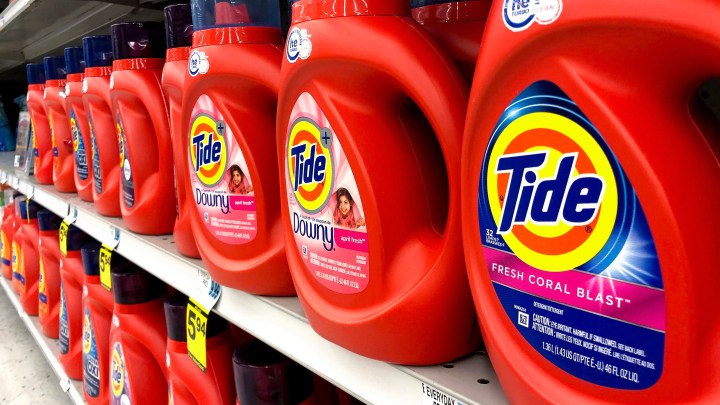
Higher-income consumers sticking with premium brands, like P&G’s, despite price increases
Higher-income consumers sticking with premium brands, like P&G’s, despite price increases

The maker of consumer brands like Tide, Oral-B, Vicks and Bounty had a strong quarter. Procter & Gamble’s earnings report out Wednesday beat Wall Street’s expectations, with net sales up 7%. P&G also raised its outlook for the rest of the year.
All this despite the company — and its customers — facing higher costs at every stage of the supply chain, from raw materials to grocery shelves. P&G’s pricier premium products did particularly well in categories like health care, grooming, laundry and baby care.
This is not an easy consumer economy to navigate, with costs to produce and ship goods soaring, and supply chains still messed up.
So for P&G to push sales and profits way up was a pretty big feat, said Erin Lash, a director of consumer sector equity research at Morningstar.
“The firm was able to raise prices — a 5% increase in prices — while also growing volumes. So there wasn’t that trade-down or pushback at the consumer level,” she said.
That means consumers didn’t look at the high price of Bounty or Tide, then look in their wallets and decide to buy some cheaper paper towels or detergent. But that doesn’t mean consumers will fork over any amount anywhere, said Arun Sundaram, senior equity research analyst at CFRA Research.
“We’re seeing consumers become more conscious about where they shop,” he said. “Rather than buying that Bounty paper towel at your local grocery store, heading to a discount store or a club store to buy a larger pack size. Their cash outlay is greater, but they’re getting better value for their buck.”
But why exactly are we sticking with the more expensive brands? Well, for one thing, we’re still spending “pandemic style” — not going out so much, pampering ourselves — said Chris Jackson at polling firm Ipsos.
“People are spending more time at home, maybe wanna spend more on good-quality home stuff,” Jackson said.
But this is only true of some consumers, said Kayla Bruun, economic analyst at public-opinion firm Morning Consult.
“The consumers driving a lot of the demand for discretionary purchases do tend to be the ones earning a higher income.”
Among households earning less than $50,000 a year, more folks are struggling with inflation, said Ipsos’ Jackson. They could still be trying to catch up on debts after job and income loss in the pandemic.
“That low-income group has recovered a little bit, but it’s been much slower, much more fitful,” he said. “And it’s that low-income group that’s really the most squeezed by cost increases.”
And they’re the consumers most likely to “trade down” to cheaper products or just buy less.
There’s a lot happening in the world. Through it all, Marketplace is here for you.
You rely on Marketplace to break down the world’s events and tell you how it affects you in a fact-based, approachable way. We rely on your financial support to keep making that possible.
Your donation today powers the independent journalism that you rely on. For just $5/month, you can help sustain Marketplace so we can keep reporting on the things that matter to you.











